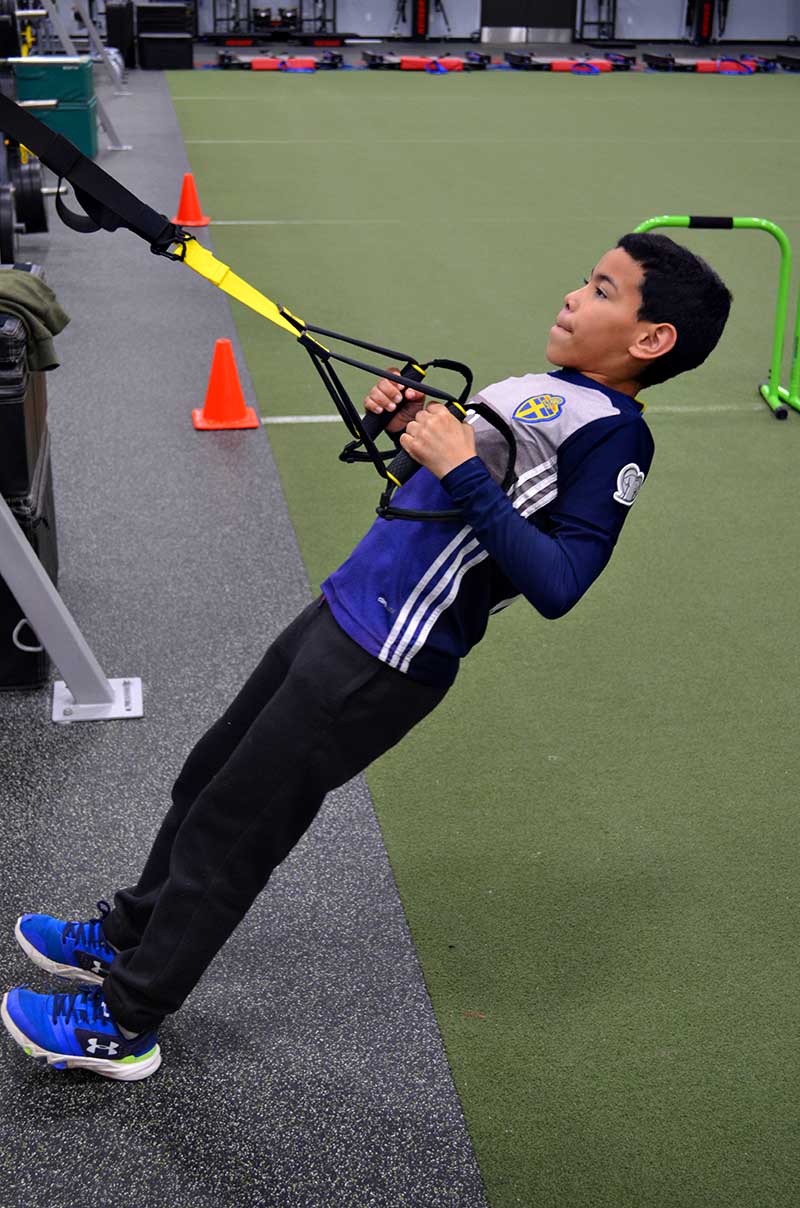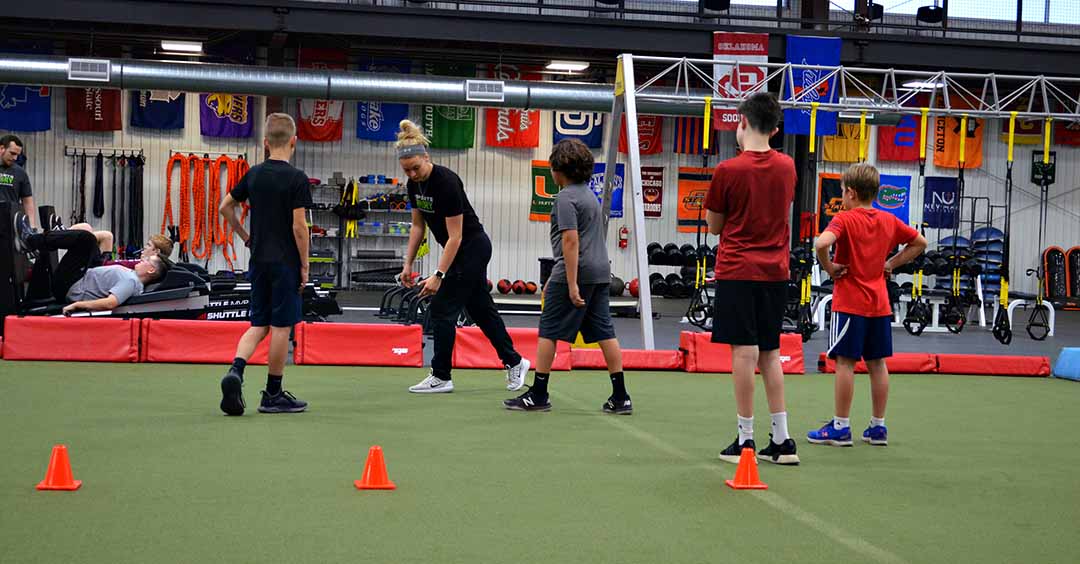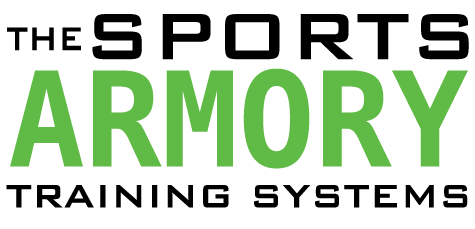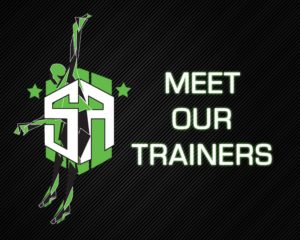The 5 Principles of Elite Athletic Performance
As a professional sports performance specialist, it is my job to be a resource for athletes, coaches, and parents. My company designs physical training programs that enhance athletic qualities for competitive athletes in order to maximize playing ability and reduce the likelihood of injury. Our programs improve body composition, muscular strength and endurance, cardiovascular endurance, speed, agility, coordination, dynamic balance, power, etc. We also take into account the age, gender, sport, current health status and experience of the athletes we work with. Every athlete has their own journey and we will advise accordingly.
In an attempt to create a framework for training elite athletic performance, I’ve received inspiration from the writings of Dr. Tudor O. Bompa, a world-renowned expert on Periodization. Based on these writings, I have classified training into five principles that create a roadmap to high performance. These principles are physical, technical, tactical, theoretical, and psychological. In this paper, I hope to impress upon you the interrelation of all five principles and the importance of their systematic approach. Random acts of training at random times will only ever produce random results at best. Athletes put their trust in our ability to guide them in the right direction. Most of the time, they don’t even have a choice in the matter. They deserve the opportunity to thrive in the training environment we create not just survive it.
Principle #1: Physical
It all starts here.
I have spent my entire career thus far trying to stress the importance of strong physical foundation. In sports, physicality is the platform on which all the other principles are built. It is mind-numbing to me to think of how many dollars have been exchanged for skills training for an athlete that lacks the physical ability to absorb those skills. I ask myself why a volleyball player would pay for hitting lessons when she clearly lacks the ability to jump well. Why would a soccer player that lacks conditioning pay for a skills camp that will inevitably test their endurance or a softball player that pays hundreds, maybe thousands of dollars for hitting lessons while not having developed efficient rotational power. Our youth sports community is so mesmerized by sports, that they tend to forget that there is a process that must be followed in order to improve success. When a young man or woman joins the armed forces, they aren’t handed a rifle and placed on the front lines with instructions to just figure it out. This happens to be a common method in youth sports. Here’s a ball, go figure it out. This “Sink or Swim” mentality is unnecessary and as it relates to children, it’s irresponsible. When I’ve met resistance from youth coaches and parents in the past about incorporating my services into their program, I ask the question: “If you don’t think physical training is of any importance, then why do you ALWAYS recruit the biggest, fastest, and strongest kids you can

find?” Youth sports coaches always pick out the best athletes which is a clear indicator that athletic skills training is obviously of critical importance. Bottom line, athletes can not tolerate high levels of sports skills training without the proper level of athletic skills and physical ability. It is my opinion that for the vast majority of young athletes, sports participation doesn’t highlight their athletic abilities, it exposes their weaknesses. For those athletes that aspire to make a career of sports to whatever degree achievable, Dr. Bompa states “To stimulate maximal amounts of physiological adaptation, the athlete must train for 8 to 12 years to optimize physical performance.” Every single month, I will sign up new athletes that have never participated in a professional physical performance program and it is glaringly obvious. It saddens me to see the potential lost in some of these athletes simply because they started off in the wrong direction. At a young age, the only priority for a developing young body should be to become a physical specimen at each stage of development. Sports participation and competition should come second. Once the athlete has established a solid foundation of physicality, the next element of elite performance begins.

Principle #2: Technical
Its all about technique baby!
Once we have developed physically able athletes, we introduce the technical components of their sport and begin the mastery process. Athletes now participate in the finer aspects of their sport by training their bodies to efficiently reproduce specific actions that will be called upon in competition. Athletes will train these skills to create economy in every motion. Highly economical athletes have the ability to slow the game down in their minds eye and utilize less energy to create and recreate game advantage plays. The idea here is to make it look easy. We’ve all seen those types of athletes that seem unstoppable while giving the appearance that it comes with minimal effort. In truth, these athletes are so well technically trained that their sports specific actions become second nature. This is a product of being physically able to put in the hours and hours of technical work required to create mastery of skill.
I sometimes find myself in conflict with some of my more driven athletes. I’ll see them throughout the facility working out on their own, shooting baskets or working on touches for soccer. I applaud their efforts, but I would be remiss not to mention a flaw in their habits. It seems like they are mostly just randomly doing stuff. There really isn’t any rhyme or reason to what they are doing, they’re just doing. I encourage my athletes
to put some thought and strategy behind their practice. Athletes need to focus their technical practices toward their greatest need. This is the first stage of using tactics in training and leads me to the next principle of training. Repetitive technical practice has its time and place but, in order to create carry-over to the field or court, a tactical focus must be added.
Principle #3: Tactical
Tactics and Strategy
As I previously mentioned, I see a lot of well-intentioned athletes simply spinning their wheels during their extra efforts to improve their skill sets. For example, shooting free throws is great as a technical effort but, it’s a lot easier to hit your shots while you’re alone in a quiet gym with a heart rate of 78bpm than it is in a crowed playoff game where every free throw counts and your fatigued body is operating with a heart rate of 130bpm. It is crucial that athletes spend time adding tactical elements to their training. Athletes must have a clear understanding of the strategical aspects of the game and how those aspects will affect them during competition. They need to know the strategies of elite performers in their sport. They need to be aware of how their opponents will use strategy against them and what their counter measures will be. Athletes will need to try and recreate situations that they may encounter during play and practice overcoming those challenges. All of these things must be practiced in a similar physiological state in order familiarize the athlete with that particular type of pressure.
Another crucial aspect of strategy is to focus a significant amount of time on improving weaknesses. I typically see athletes working on the things that they are already good at. While this is necessary for further improvement and maintenance, athletes cannot ignore their weaknesses. In high level competition, the weaknesses are always exposed. It will be a part of the opponents strategy to find and exploit that weakness for their advantage. Elite level performers focus on being well rounded and prepared for anything. These physically trained specimen possess the technical and tactical training habits that help them to understand the theory of practice and competition, which just so happens to be the next principle.

Principle #4: Theoretical
Understanding the Game
I’ve always told my athletes and clients that a coach or trainer with no philosophy is a dangerous one. We have an open communication policy in our facility. Athletes and parents are encouraged to ask questions about our strategies and philosophy. Coaches and trainers that respond to questions with “Because I said so!” are of archaic mindsets and shouldn’t be regarded as competent professionals. Let’s face it, most of them aren’t technically professionals anyway.
We have found that providing education within our training program improves compliance and the trainer/athlete relationship. We feel that we should be teammates with a common goal and need to be on the same page. Helping our athletes theoretically understand our approach improves the flow of every session and gives the athlete a sense of taking ownership over their training practices. Trainers and coaches alike should strive to increase their athletes understanding of the training or practice sessions. The lesson of Cause and Effect should become clear to athletes once they have been under the influence of top-notch training and coaching practices by professionals who genuinely care about their athletes’ success. Once we have systematically graduated our athletes through each of the preceding principles, its time to take a look at the final stage.
Principle #5: Psychological
Its all in your head.
I have mixed opinions about this topic as I’m sure most of our industry does. I tend to lean toward the idea that if our athletes are properly and systematically prepared, then the psychological aspect takes care of itself. An athlete’s mental edge is forged through the process of overcoming the challenges presented by each stage of principle development. On the other hand, mental competency is diminished when the athlete seeks short cuts to success and chooses to not train by systematic principles.
The ability of an athlete to participate in an endeavor that is riddled with challenges and zero promises proves that they have an above average mental disposition. Truth is, the ability to compete is inherent. It’s been a part of us since the beginning of time. Early in our infancy, the act of play serves as an important role in our social development. Play naturally

introduces us to competition and in turn competition teaches us how to measure our abilities to others. For those kids that acquire a taste for competition, it’s only natural that they graduate to competitive sport environments. I honestly believe that if the principles in this article are followed correctly, sound psychological development will be achieved.
The psychological focus of an athlete only becomes scrambled in the presence of others. Athletes must overcome the ulterior motives of their parents, coaches, teammates, and so on. As it relates to youth athletes, our society would be better served by becoming “Athlete Centered” as opposed to “Sports Centered”. A coach’s job should be to teach athletes how to play and compete in sports. A parent’s job is to provide support and resources. A trainer’s job is to physically prepare the athlete to be able to withstand the intensity of competition. Everyone should be working in compliance with the athlete in order to improve chances of success. If an athlete trains systematically with the intention of mastering their sport and parents, coaches, and trainers follow their defined roles, then we all are giving our best effort toward our athlete’s opportunity for success. Regardless of what the athlete is able to achieve in sports, their experience in sports should always be a constructive one. I believe that people should be better off in life due to their childhood participation in athletics. Unfortunately, a lot of adults carry deep scars figuratively and literally. Physically and emotionally. There is a lot to be gained from success in sports and I take the position of being a resource that strives to help athletes succeed in their goals. After all, our kids are our future and it should be our focus to get them off on the right foot.
In summary
With the intention of producing and reproducing elite athletic performance, a systematic approach is required. Yes there are some athletes that are so gifted and driven that they have the ability to not only overcome adversity in competition but also overcome the adversity of their leadership. These athletes are the exceptions to the rule and have no relevance to my current discussion. My intention is to create the roadmap to success that creates value for the majority. Our model not only consistently builds robust athletes but also develops mental confidence which gives them another advantage in competition. We look at every principle as a gateway toward success. Our athletes will train physically in order to enhance the athletic qualities needed for success within their particular sport. They will learn the technical execution of every exercise in order maximize the benefits from those exercises. Their routines will be tactically planned to ensure the best results for their current needs. We will discuss the theory behind our program in order to give our athletes knowledge on the subject of conditioning and to encourage compliance. Throughout this process our athletes cultivate a true understanding of what is required to become an elite performer and have the psychological fortitude to demand excellence of their abilities. A well-trained athletes is a force to be reckoned with.
Join Now
Sign-up for The Sports Armory email list to stay connected on the latest in sports performance training.


